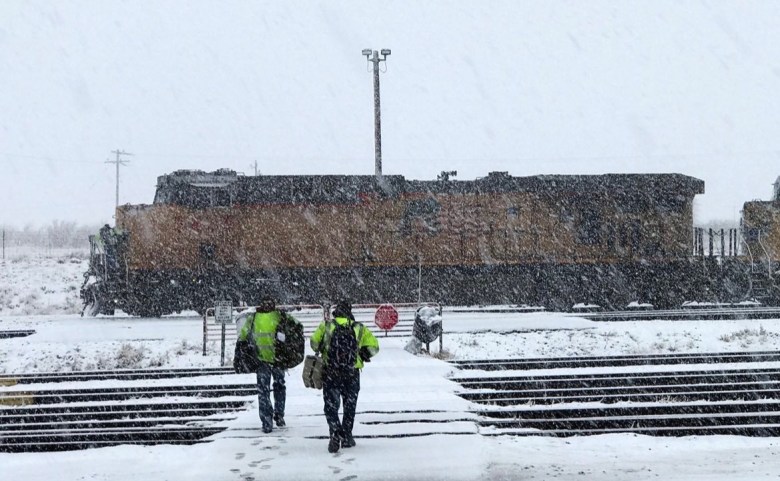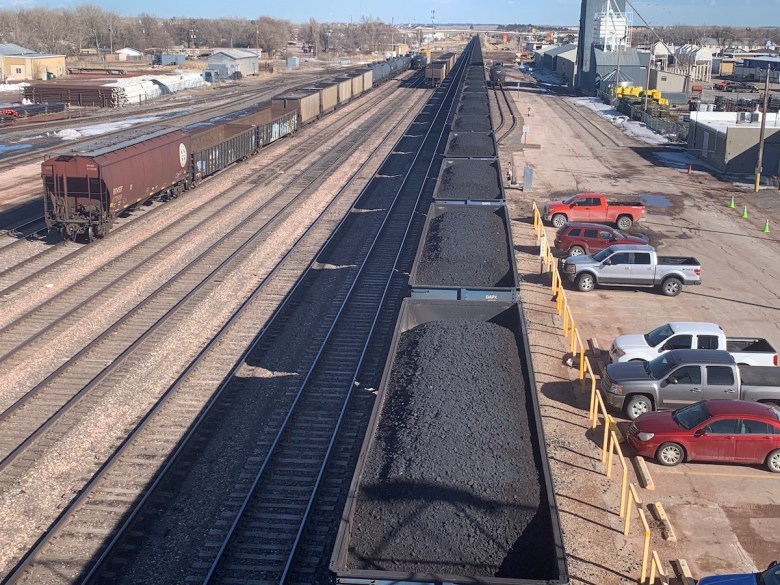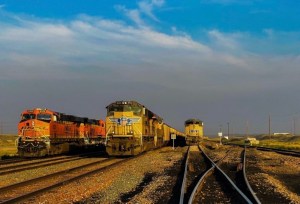Railroad workers who ship coal from northeast Wyoming say a new attendance policy is too demanding and incentivizes train engineer crew members to work sick or fatigued for fear of being fired.
The Berkshire Hathaway-owned BNSF Railway launched the “Hi-Viz” attendance policy across its North American system in February. It established a point-based system that allows employees to bank points by being available on “high impact days” and penalizes them for taking certain days off. If an employee loses all their points, he or she can be fired.
Workers say it leaves few options for planning days off and lessens the flexibility to take enough sick days or personal days. It’s a safety issue for both railroad workers and the public because employees feel pressure to work on days they might not be prepared to meet the rigorous safety demands of the job, said Gillette-based BNSF conductor Kevin Knutson, chairman of the SMART Transportation Division Local 65 union.
“So what we have is a huge impact on employees, but also the public because we have people out there basically driving drunk,” Knutson said.
BNSF contends the program does not result in any less time off for employees and it actually allows for 25% more personal leave days. The company adjusted its Hi-Viz policy earlier this month to allow for more flexibility and to better reward “good performers.”
“We introduced Hi-Viz in February to not only improve crew availability and to help us remain competitive, but also to give our train crews more visibility to manage their time off,” BNSF Railway Vice President of Transportation Matt Garland said in a video message posted to YouTube earlier this month. “Hi-Viz is certainly a change from the past and we appreciate those who have adapted to the new system. We’re also grateful for the constructive feedback shared over the last three months.”
 Union Pacific crew members prepare to board an engine during a blizzard in Bill in 2021. (Alan Nash)
Union Pacific crew members prepare to board an engine during a blizzard in Bill in 2021. (Alan Nash)
Union representatives say the updates to the Hi-Viz policy amount to “fluff.”
“The sad fact is that the nation’s supply chain challenges are partially due to a 29% cut in rail labor at the Class I railroads over the past six years,” Brotherhood of Locomotive Engineers and Trainmen National President Dennis Pierce said in a prepared statement May 16.
“They downsized the workforce nationwide — and it’s not just BNSF,” Pierce told wyomingdigest.com. “We’re not pleased with any of these Class 1 railroads because they’re all doing the same thing.”
Unions representing BNSF workers authorized a strike in response to the Hi-Viz program, but a court ruled it a non-strikeable matter under the Railway Labor Act. Knutson and fellow union members organized protests May 10 at two locations in Gillette, including one on a public overpass as a passenger train with railroad executives passed through the Gillette terminal.
Pushback against the Hi-Viz program is singularly focused on workplace and public safety and the wellbeing of BNSF employees and their families, Knutson said. “We have good pay and benefits, but it’s all for naught when you’re working constantly and if you have to work sick or fatigued. It’s a very unsafe environment right now.”
Railroads and the PRB
The Powder River Basin coal industry is primarily served by BNSF Railway and Union Pacific Railroad. In 2008 — the peak of PRB coal production — the two railroads moved about 90 trainloads of coal per day out of the basin. That number has slipped in-step with declining coal production in the region, down to an average of less than 29 trains per day in April.
“One of the unintended consequences that I think the railroad completely missed is that when you treat people like this, they don’t want to work for you anymore.”
Dennis Pierce, Brotherhood of Locomotive Engineers and Trainmen
Both railroads have trimmed job numbers on the PRB coal system over the past decade. BNSF slashed nearly 90 positions in Guernsey and closed a mechanical shop there in the summer of 2020. Automation has also resulted in fewer railroad workers dedicated to the PRB coal transportation system.
Yet, mining companies have enjoyed a slight rebound in demand in the past 18 months, both in metallurgic coal (for steelmaking) and in thermal coal (the type Wyoming produces for generating electricity). Metallurgic coal producers in the eastern U.S. say they’re not getting enough trains to meet demand, while thermal coal producers in the PRB have generally met the recent uptick in demand with more trains but fewer engineers overseeing the operations, according to Knutson.
The number of BNSF’s trains dedicated to PRB coal has gone from about 150 a few years ago to approximately 300 today, Knutson estimated. The railroad is hiring, and is already training 300 new employees company-wide, according to BNSF. Yet, its Hi-Viz attendance policy was put in place to move more coal and freight with fewer employees, union representatives contend.
 A loaded coal train rolls through Gillette in March 2020. (Dustin Bleizeffer/wyomingdigest.com)
A loaded coal train rolls through Gillette in March 2020. (Dustin Bleizeffer/wyomingdigest.com)
Pierce, of the Brotherhood of Locomotive Engineers and Trainmen union, claims that both BNSF and Union Pacific are contemplating extending the coal trains that serve the PRB from 1.5-2 miles long to 4 miles long. It would essentially turn three trains into one long train with a single crew, Pierce said.
“It’s almost a competition between the Class 1 [railroads] to see who can run the longest train and they’re exceeding the grasp of the technology routinely,” Pierce said. “There’s no way to really teach people how to operate a train like that.”
Pierce said the Hi-Viz policy is part of a growing “‘go to work sick, tired or get fired” attitude among railroads while shirking supply chain demands — which, he believes, is an argument for re-regulating the industry.
“One of the unintended consequences that I think the railroad completely missed is that when you treat people like this, they don’t want to work for you anymore,” Pierce said.
The policy is not a good selling point for prospective new employees, Knutson said. Railroad workers simply want fair attendance policies and a safe workplace because they’re dedicated to their jobs.
“[BNSF employees] are not making it unsafe by saying — excuse my French — ‘F___ the railroad,’” Knutson said. “They’re still doing their job. It’s just tougher and tougher to do.”
The post Wyoming railroaders say BNSF attendance policy is unsafe appeared first on wyomingdigest.com.







